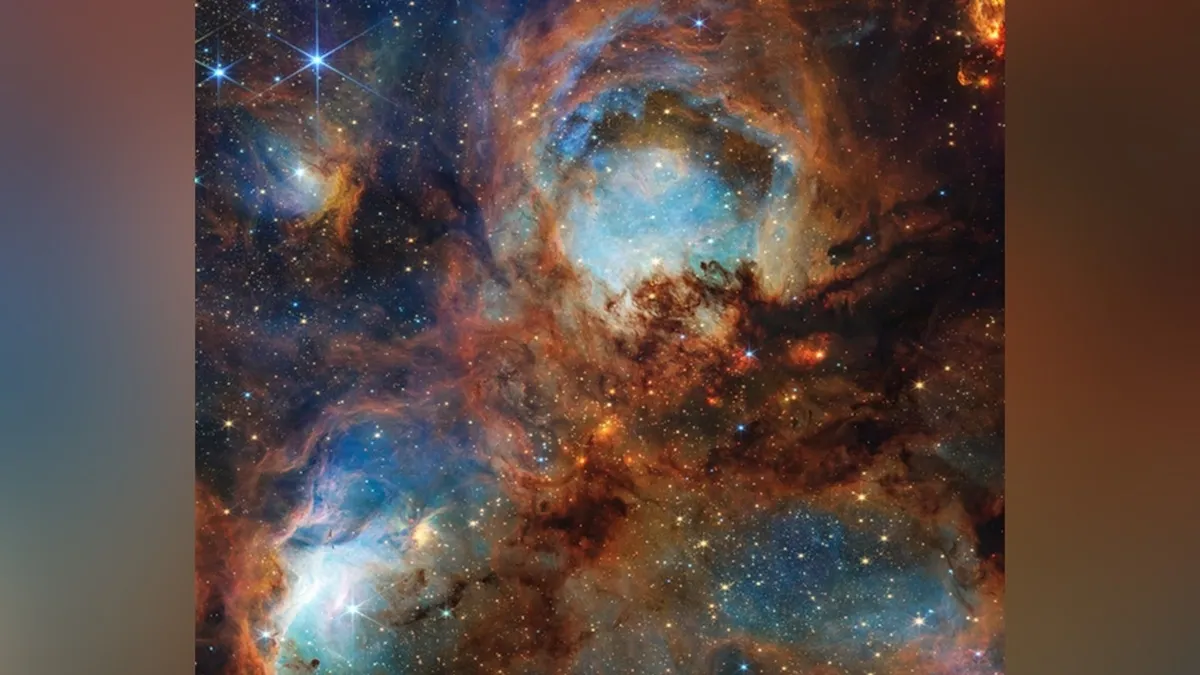
The James Webb Space Telescope, a marvel of modern science, has made yet another breathtaking discovery, marking three years of remarkable space exploration. This time, the most powerful telescope ever launched has uncovered a cluster of forming stars nestled within the toe beans of the Cat's Paw Nebula. Officially designated as NGC 6334, the Cat's Paw Nebula is located in the constellation Scorpius, approximately 4,000 light-years from Earth. This massive emission nebula serves as a prominent star-forming region, as noted by NASA.
The Cat's Paw Nebula is aptly named for its large, round features that resemble a feline footprint. Within one of these toe beans lies a unique subset of structures reminiscent of mini toe beans, composed of gas, dust, and young stars. The James Webb Space Telescope's NIRCam (Near-Infrared Camera) successfully captured stunning images of these forming stars, showcasing the incredible detail the telescope is capable of.
As the mission progresses, the Webb telescope continues to fulfill its design objectives, revealing hidden aspects of the universe, including the intricate star formation process and the exploration of some of the earliest galaxies. According to Shawn Domagal-Goldman, the acting director of the Astrophysics Division at NASA Headquarters in Washington, this telescope is instrumental in understanding the transformation from a large molecular cloud to massive stars—an intricate process that astronomers are still striving to fully comprehend.
The Cat’s Paw Nebula provides an exceptional opportunity for scientists to study the turbulent cloud-to-star process in great detail. Star formation is a fleeting occurrence; as massive young stars interact with nearby gas and dust, their bright starlight generates a luminous glow, depicted in blue in the captured images. These disruptive young stars play a crucial role in the overarching narrative of this stellar region, as highlighted by NASA's findings.
The latest images reveal orange-brown tiers indicating stardust, along with small patches that signify seemingly vacant zones. These areas suggest the presence of dense foreground filaments of dust, which harbor still-forming stars. Scattered throughout the brown dust are small, fiery red clumps, which mark regions where massive star formation is actively occurring, according to NASA's analysis.
Notably, some massive blue-white stars, particularly one located in the lower left toe bean, appear more distinct than others. This clarity arises because any intervening material between the star and the telescope has been dissipated by stellar radiation. An intriguing aspect of the images is the bright, red-orange oval located at the top right, likely representing a dense area that is just beginning its star-formation process, inferred from the sparse background stars.
Launched in December 2021 and commencing scientific operations in July 2022, the James Webb Space Telescope has established itself as a groundbreaking tool in astrophysical research. With its unparalleled resolution, the telescope can peer deeper into space than ever before, utilizing infrared light observations to uncover previously unknown regions of the universe. As stated by Domagal-Goldman, the telescope continues to break its own records while shedding light on the universe's mysteries.
The questions raised by the Webb telescope are as captivating as the answers it provides. Whether investigating the enigma of dark matter alongside NASA’s almost-completed Nancy Grace Roman Space Telescope or narrowing the search for extraterrestrial life on Earth-like planets with the Habitable Worlds Observatory, the contributions of the Webb telescope are poised to revolutionize our understanding of the cosmos.